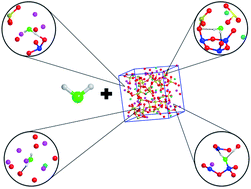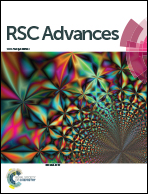Probing the fate of interstitial water in bulk bioactive glass by ab initio simulations†
Abstract
As also observed for conventional silicate glasses, water can be incorporated in the bulk interstitial regions of a bioactive glass (BG) matrix during the glass preparation and/or upon exposure to an aqueous environment. However, in the case of BGs, very little is known about the effect of hydration on the bulk structure, and then on key properties of these materials, such as biodegradation and bioactivity, that depend on the bulk structure itself. Here we employ a combination of atomistic simulation techniques to explore the nature and effects of water–BG interactions in the bulk of a bioactive glass. The fate of water inserted in the bulk interstitial region of 45S5 bioglass has been studied by ab initio geometry relaxations and Molecular Dynamics (AIMD) simulations. We probed the interaction of a water molecule with silica rings and cages of different size, as well as the stability of potentially relevant configurations involving manually dissociated water and opened rings. The local stability of selected configurations was further assessed by subjecting them to AIMD runs, in order to overcome possible kinetic barriers for water diffusion and dissociation. Small rings do not appear as favourable absorption sites in the bulk of a bioactive glass as they are for bioinert glasses. Moreover, water dissociation through rupture of Si–O bonds of silica rings formed in the bulk was thermodynamically unfavourable. However, a high-temperature AIMD run led to a dissociated state involving no broken Si–O bonds and a free hydroxyl: because re-optimization of this state produced the most favourable hydration energy identified in this study, dissociative absorption through this mechanism appears a likely outcome of the water–45S5 interaction at low water content. We discuss the structural and dynamical basis for the stability of this and other water–glass adducts identified, and the potential consequences of these interactions for the behaviour of the glass in a biological context.


 Please wait while we load your content...
Please wait while we load your content...